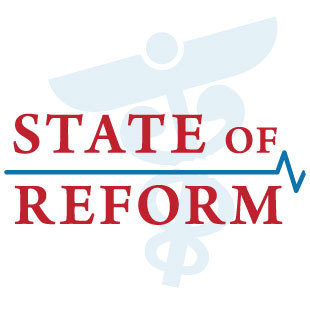
The Prime Minister Narendra Modi met representatives of Indian business on September 8, 2015. The Indian businessmen as usual asked for lower interest rates, weaker rupee and so on, to get economic growth going.
Modi on the other hand emphasized on job creation and the role the private sector could play in it. A report in the Mint newspaper points out that Modi also prodded the banks to help small and medium enterprises in the so-called informal sector as “they have great potential for generating new jobs”.
As I have mentioned in previous newsletters of The Daily Reckoning, creating new jobs should be a top priority of the Modi government. This is primarily because 13 million Indians are entering the workforce every year.
Also, as I have mentioned in the past, the only way countries have gone from being developing to being developed is by unleashing a manufacturing/industrial revolution. Despite having a huge labour force and initiating economic reforms in 1991, India has missed out on the manufacturing revolution.
Why is that the case? As Sanjeev Sanyal writes in The Indian Renaissance—India’s Rise After a Thousand Years of Decline: “The country [i.e. India] appears to have shifted from farming to services without having gone through an industrial stage. This not only goes against conventional wisdom but also the experience of other fast-growing Asian economies particularly China.”
China and other Asian countries (Japan, Taiwan, South Korea and countries of South East Asia) essentially followed an export oriented manufacturing strategy to create economic growth. They started with low-end exports and then gradually started going up the value chain. “These economies usually started out by scaling up low-skill exports like making ready-made garments, toys, cheap household items and so on. With time, they all move up the value chain as wages rise and their workforce become more skilled. Exports shift to things like high-end electronics and automobiles,” writes Sanyal. The services sector becomes a driver of growth only later.
In the Indian case, nothing like that happened. After the 1991 economic reforms, we moved on to exporting complex automobile parts and pharmaceuticals. We also exported information technology and became a global hub of the business process outsourcing industry. India also saw a huge expansion in banking, hotels, airlines, cable television, telecom and so on. None of this was low-end, like was the case of Asian countries as well as China. Hence, we jumped from farming to services, without going through an industrial/manufacturing stage.
And this jump from farming to services, without going through an industrial stage, is counter-intuitive. In fact, India should have latched on to a low end export oriented manufacturing strategy much before the 1991 reforms. But that did not happen.
In order to understand why, we need to go back in history and talk about a gentleman called Prasanta Chandra Mahalanobis. Mahalanobis founded the Indian Statistical Institute in two rooms at the Presidency College in Calcutta (now Kolkata) in the early 1930s. He became close to Jawahar Lal Nehru, the first Prime Minister of India, and was appointed as the Honorary Statistical Advisor to the government of India.
As Gurcharan Das writes in India Unbound –From Independence to the Global Information Age “His biggest contribution was the draft plan frame for the Second Five Year Plan…In it he put into practice the socialist ideas of investment in a large public sector (at the expense of the private sector), with emphasis on heavy industry (at the expense of consumer goods) and a focus on import substitution (at the expense of export promotion).”
Hence, big heavy industry became the order of the day at the cost of small consumer goods. The alternative vision of encouraging the production of low-end consumer goods was put forward as well. As Das writes “It belonged to the Bombay [now Mumbai] economists CN Vakil and PR Brahmanand. It was neither glamourous nor as technically rigorous as Mahalnobis’s, but it was more suited to the underdeveloped Indian economy. Its starting point was that India lacked capital but had plenty of people…The thing to do was to put these people into productive work at the lowest capital cost.”
And how could this be done? “The Bombay economists suggested that we employ the surplus labour to produce “wage goods,” or simple consumer products – clothes, toys, shoes, snacks, radios, and bicycles. These low-capital, low-risk, business would attract loads of entrepreneurs, for they would yield quick output and rapid returns on investments. Labour would produce the goods it would eventually consume with the wages it earned in producing the goods,” writes Das.
Nevertheless, with the focus on the public sector, nothing like that happened.
But why did India miss out on a manufacturing/industrial revolution even after the process of liberalization started in 1991? India’s domestic savings through much of the 1990s stood at around 23% of the GDP. A major portion of these savings went into financing the government fiscal deficit. Given this, interest rates were high and “the country was forced to use capital sparingly,” writes Sanyal. Any industrial revolution needs a massive amount of capital, which wasn’t easily available in the Indian case.
Further, even with economic reforms many things on the ground did not change. As Sanyal writes: “The easing of big-picture impediments like industrial licensing and import tariffs did not get rid of the underlying framework of over-regulations, bureaucratic delays and erratic judicial enforcement. The country had built up a huge baggage off laws, by-laws and regulations at every layer of government during the half-century under socialism.” Much of this still remains to be dismantled.
Take the case of labour laws. There are more than fifty labour laws just at the central government level. As Jagdish Bhagwati and Arvind Panagariya write in India’s Tryst with Destiny: “The ministry of labour lists as many as fifty-two independent Central government Acts in the area of labour. According to Amit Mitra (the finance minister of West Bengal and a former business lobbyist), there exist another 150 state-level laws in India. This count places the total number of labour laws in India at approximately 200. Compounding the confusion created by this multitude of laws is the fact that they are not entirely consistent with one another, leading a wit to remark that you cannot implement Indian labour laws 100 per cent without violating 20 per cent of them.”
These laws prevent small Indian firms from growing bigger. They also prevent big Indian industrialists from entering sectors that can employ a huge amount of labour. Bhagwati and Panagariya recount a story told to them by the economist Ajay Shah. Shah, asked a leading Indian industrialist about why he did not enter the apparel sector, given that he was already backward integrated and made yarn and cloth. “The industrialist replied that with the low profit margins in apparel, this would be worthwhile only if he operated on the scale of 100,000 workers. But this would not be practical in view of India’s restrictive labour laws.”
If Narendra Modi wants Indian businesses to create jobs, he first needs to sort out the labour laws. And that will be easier said than done.
The column originally appeared on The Daily Reckoning on Sep 10, 2015



